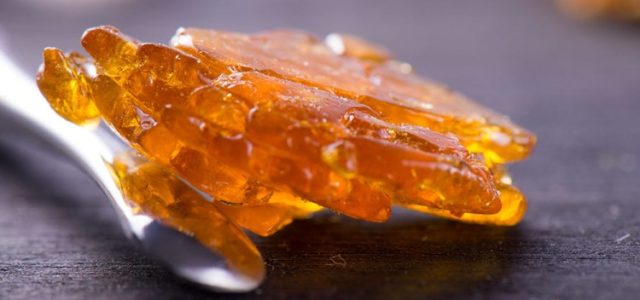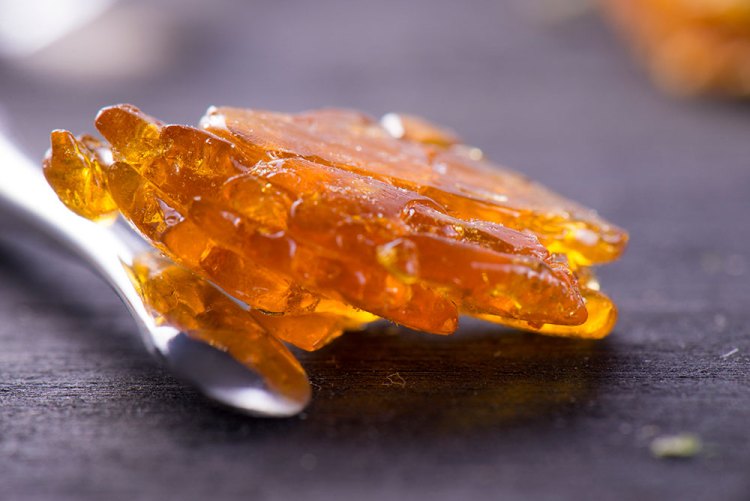A Guide to Cannabis Wax and “Dabbing”
CBDRecreational MarijuanaUncategorized December 18, 2022 MJ Shareholders

“Dabbing” is all the rage among high-tolerance cannabis consumers. The practice of dabbing is essentially heating a cannabis concentrate — often called a wax — to a very high temperature and then inhaling the smoke. This method can result in consuming cannabis that has a THC level as high as 90%.
Dabbing is known for the strength of its high, flavor, potency, and even the “ritual.” But wax can also be added to cannabis flower and smoked for a milder effect.
And dabbing is not limited to wax. Wax is simply among the more common and popular cannabis concentrates or extractions used in dabbing — and it has several subcategories.
Follow along as we break down some of the more popular wax subcategories — and a few alternative concentrates or extracts that are just as popular.
Cannabis Wax Production, Types
Waxes consist of cannabis plant material that’s leftover after being trimmed and sold as flower. A solvent like butane strips terpenes and cannabinoids from the plant material. This process produces a dense, sticky substance called wax that is exceptionally high in THC and sometimes other cannabinoids.
That wax can come in several forms:
Budder, Badder, or Batter
Earning the label due to its consistency, said to resemble cake batter. It’s thick and dense. It also usually has a golden color that resembles vanilla cake batter. Budder, Badder, and Batter are all accepted terms and spellings within cannabis culture.
Crumble
Like wax batter, crumble gets its name thanks to its physical characteristics: It is often drier and looser than other popular concentrates. The product is cooked in a vacuum oven for a long time, which helps reduce the risk of contamination by mildew or mold. It’s one of the most potent concentrates — often reaching that 90% THC mark.
Sugar
Sugar wax is said to have been an “accidental finding” as condensation and other environmental factors turned traditional wax into a concentrate that resembles wet sugar. Its color varies from a light shade of yellow to amber.

Other Popular Dabs That Aren’t Wax
Shatter
Named after its brittle traits — shatter is almost like a glass. It is typically some shade of yellow, and its production, while relatively new, has its roots in the ancient practice of producing hashish. It is cooked in a vacuum oven to make it more pure and crystalline.
Taffy, or Pull ‘n’ Snap
This concentrate is very close to shatter, but may be gooier or stickier due to the manufacturing process.
Diamonds
Diamonds’ solid and crystal-like appearance accounts for the name. They are technically isolates because they are the result of extracting only one cannabinoid (like CBD), as opposed to a concentrate derived from whole plant matter.
Rosin
Rosin is among the buzziest cannabis concentrates. Rather than using solvents like butane, heat and force of pressure are used to extract concentrated cannabinoids.
Live Rosin
Fresh cannabis (as opposed to cured) is frozen to manufacture live rosin. It’s then put through an ice-water extraction process and further refined using a press. It’s believed to be the best way to get a “whole plant” experience as none of the cannabinoids or terpenes get extracted in the process.
There’s a burgeoning marketplace of products containing live rosin — from candies to vape cartridges.
So whether you’re consuming budder, badder, batter, sugar, or crumble, you’re technically inhaling a wax. The differences between these concentrates and the others listed can get very complex and technical. Websites like Leafly and merchants like Attis Trading Co. are good places to dive deep into those differences.
Happy dabbing!
MJ Shareholders
MJShareholders.com is the largest dedicated financial network and leading corporate communications firm serving the legal cannabis industry. Our network aims to connect public marijuana companies with these focused cannabis audiences across the US and Canada that are critical for growth: Short and long term cannabis investors Active funding sources Mainstream media Business leaders Cannabis consumers










